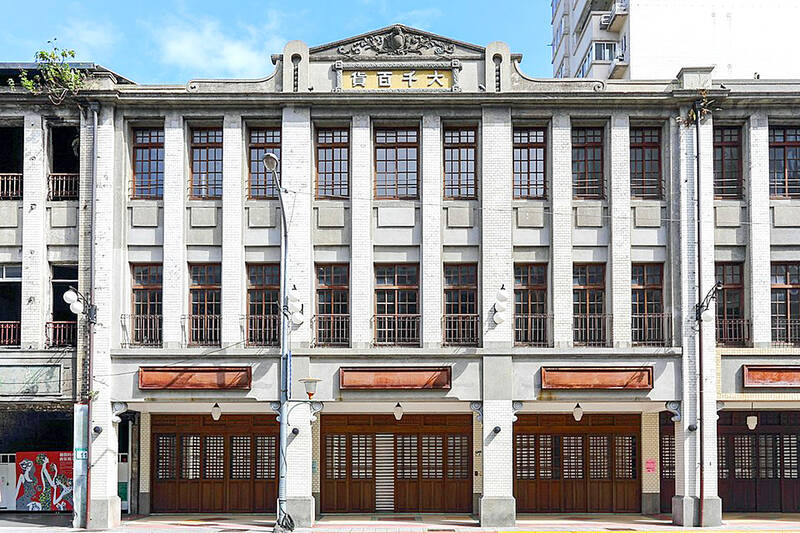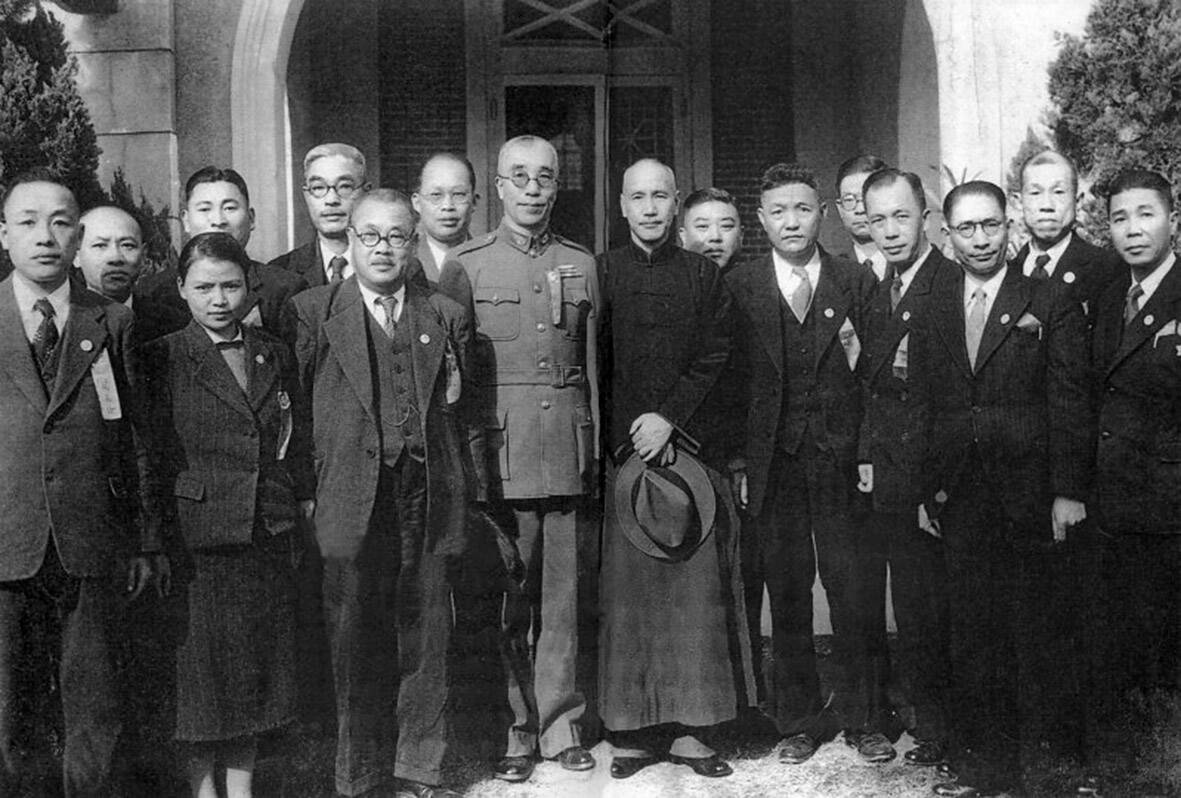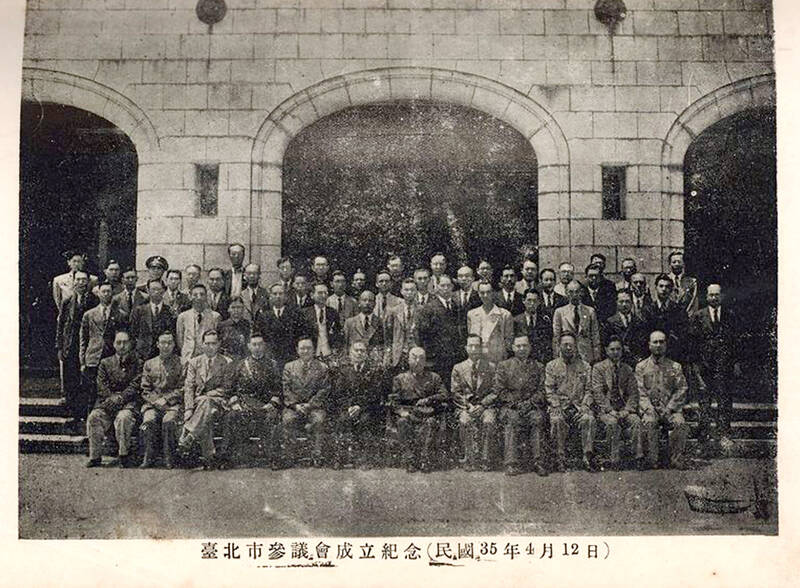April 21 to April 27
Hsieh Er’s (謝娥) political fortunes were rising fast after she got out of jail and joined the Chinese Nationalist Party (KMT) in December 1945. Not only did she hold key positions in various committees, she was elected the only woman on the Taipei City Council and headed to Nanjing in 1946 as the sole Taiwanese female representative to the National Constituent Assembly. With the support of first lady Soong May-ling (宋美齡), she started the Taipei Women’s Association and Taiwan Provincial Women’s Association, where she sought to improve women’s welfare and boost participation in politics.
On April 24, 1948, Hsieh was elected Taiwan’s first female legislator, garnering the sixth-highest votes nationwide. She served with her usual enthusiasm and energy at first — but abruptly quit in October 1949, moving to the US and not returning until 1991.

Photo courtesy of Wikimedia Commons
Growing up under Japanese rule, Hsieh was a bright and outspoken student who became Taiwan’s first female surgeon in 1940. She deeply resented colonial rule, and in 1943 she was arrested for plotting to sabotage the Japanese troops and help the Allies take over Taiwan. The authorities offered to release her if she would collaborate with the Japanese on medical work, but she staunchly refused, remaining in jail and subject to torture until the end of World War II.
“As long as I have a drop of blood left, I belong to the Chinese people!” she reportedly said defiantly.
As such, she was happy to work with the KMT, finding herself quite adept at navigating the treacherous world of politics. So why did she leave Taiwan?

Photo courtesy of Wikimedia Commons
HEADSTRONG YOUTH
Hsieh was born in January 1918 in Taipei’s Wanhua District (萬華); her father ran a Chinese restaurant next to the Red House in the Ximending area and the family lived a comfortable life.
According to her entry in the National Museum of Taiwan History, Hsieh had a bold personality from a young age. For example, when she saw boys picking on girls in the classroom, she was known to jump onto their desks and confront them.

Photo courtesy of Wikimedia Commons
Due to the influence from her father and uncle, Hsieh saw China as the “motherland” and detested colonial rule, especially after the various injustices she witnessed. Japan launched a full-scale invasion of China two years after she began her medical studies in Tokyo, and she chose to be a surgeon because she hoped to one day join the battlefield and treat wounded Chinese soldiers, writes Lin Chiu-min (林秋敏) in “The rise and the retreat of Hsieh Er on the political stage of Taiwan” (謝娥在臺灣政壇的崛起與退出).
After working in Japan for two years, Hsieh returned home and was hired by Taihoku Imperial University Hospital (today’s National Taiwan University Hospital). It was unheard of for women to perform surgery, and people often gathered outside the operating room’s glass door to get a glimpse of her in action.
In 1943, she and a group of students began discussing plans to thwart the colonial government. They believed that under the Republic of China, they could finally become first-class citizens, Lin writes.

Photo courtesy of Taiwan Historica
Thinking that the Allies were planning to land in Taiwan soon, they decided to aid the effort. The plan was to send two delegates to China to meet with the Allies, while the rest would poison Japanese troops and blow up military facilities when the time came. However, the plot was leaked, and Hsieh was jailed in the spring of 1944.
WOMEN’S CHAMPION
Japan surrendered on Aug. 15, 1945, and Hsieh was released in early September. Her father bought a building on today’s Yanping N Road, where she established Kangle Surgical Clinic (康樂外科醫院). She was gregarious and generous, treating those in need for free, and the clinic soon became a gathering space for politicians, businessmen, students and women’s rights activists to discuss current events and their ideals for the new era. Numerous prominent citizens of Taipei passed through her doors, setting the foundation for her political career.
In December, Hsieh joined the KMT. She was active immediately, and in addition to organizing the Taipei Women’s Association and the Taiwan Provincial Women’s Association, she served on numerous other male-dominated party committees. Lin writes that Hsieh wasn’t just able to break gender barriers, she crossed factional lines with ease and also had a knack for dealing with the media.
In the opening statement for the first issue of Taiwan Women Monthly (台灣婦女月刊), Hsieh wrote: “Our goal is not to demand power, nor to defeat or challenge men; we just want to be able to fulfill our responsibility in this crucial time of statebuilding and work for the betterment of our country, our people and the world … We ask for our rights so that women have the means to fulfill this duty. We’re not launching a women’s movement just for the sake of a women’s movement.”
She sought to raise women’s status through education and economic autonomy, and hoped to train more women to enter politics. Lin writes that she made solid steps towards these goals during her three years with the women’s associations.
On March 15, 1946, Hsieh was elected as the only female out of 26 Taipei city councilors — beating out 38 candidates in her district. Among other issues, she pushed for equal opportunity and pay for government employees, recruitment and training of female police and the establishment of public birthing centers to reduce birth mortality.
She was one of the most active members during the Constituent Assembly, her boundless energy mentioned in several newspaper reports. One issue she particularly took interest in was establishing minimum quotas for women during elections.
THE COMMUNIST DILEMMA
The 228 Incident, an anti-government uprising that was violently suppressed by the KMT, broke out the following year. On that day, Hsieh visited Taiwan Garrison Command head Ko Yuan-fen (柯遠芬) and urged him not to fire on the protestors (which happened). She later questioned the officials why there were gunshots and wounded people, and they lied by saying that the troops only fired warning shots into the air and the protesters got hurt in the ensuing stampede.
She believed their words and broadcast the message to the people, urging them to stay calm and that governor Chen Yi (陳儀) would exercise leniency and not prosecute the instigators. This message greatly angered the protesters, and the next day they smashed up her clinic, forcing it to close down.
However, the 228 Incident didn’t affect her popularity during the legislative elections in April 1948. Lin writes that she took on the role with gusto for the first three months, not just working on women’s issues but also tackling diplomacy, public health, finance and other topics.
However, her attendance declined as her term went on, and soon she left Taiwan for the US via France.
Lin writes that after a legislative trip to China, Hsieh saw that the KMT was about to lose the Chinese Civil War. She had already been jailed by the Japanese and had her clinic destroyed, she couldn’t imagine being persecuted by the Communists if they took over Taiwan. At the same time, her association with several Taiwanese who became leftists or communists due to their disappointment in KMT rule led to rumors that she was also one of them. Martial law was declared in May 1949, opening the period of White Terror when anyone could be arrested for being a communist. Faced with pressure on both sides, she decided to flee.
Hsieh received her PhD in public health from Columbia University and worked in the field for decades. She only dared to return to Taiwan after the lifting of martial law, where she spent the last five years of her life.
Taiwan in Time, a column about Taiwan’s history that is published every Sunday, spotlights important or interesting events around the nation that either have anniversaries this week or are tied to current events.

Most heroes are remembered for the battles they fought. Taiwan’s Black Bat Squadron is remembered for flying into Chinese airspace 838 times between 1953 and 1967, and for the 148 men whose sacrifice bought the intelligence that kept Taiwan secure. Two-thirds of the squadron died carrying out missions most people wouldn’t learn about for another 40 years. The squadron lost 15 aircraft and 148 crew members over those 14 years, making it the deadliest unit in Taiwan’s military history by casualty rate. They flew at night, often at low altitudes, straight into some of the most heavily defended airspace in Asia.

Many people in Taiwan first learned about universal basic income (UBI) — the idea that the government should provide regular, no-strings-attached payments to each citizen — in 2019. While seeking the Democratic nomination for the 2020 US presidential election, Andrew Yang, a politician of Taiwanese descent, said that, if elected, he’d institute a UBI of US$1,000 per month to “get the economic boot off of people’s throats, allowing them to lift their heads up, breathe, and get excited for the future.” His campaign petered out, but the concept of UBI hasn’t gone away. Throughout the industrialized world, there are fears that

Taiwan’s democracy is at risk. Be very alarmed. This is not a drill. The current constitutional crisis progressed slowly, then suddenly. Political tensions, partisan hostility and emotions are all running high right when cool heads and calm negotiation are most needed. Oxford defines brinkmanship as: “The art or practice of pursuing a dangerous policy to the limits of safety before stopping, especially in politics.” It says the term comes from a quote from a 1956 Cold War interview with then-American Secretary of State John Foster Dulles, when he said: ‘The ability to get to the verge without getting into the war is

Like much in the world today, theater has experienced major disruptions over the six years since COVID-19. The pandemic, the war in Ukraine and social media have created a new normal of geopolitical and information uncertainty, and the performing arts are not immune to these effects. “Ten years ago people wanted to come to the theater to engage with important issues, but now the Internet allows them to engage with those issues powerfully and immediately,” said Faith Tan, programming director of the Esplanade in Singapore, speaking last week in Japan. “One reaction to unpredictability has been a renewed emphasis on